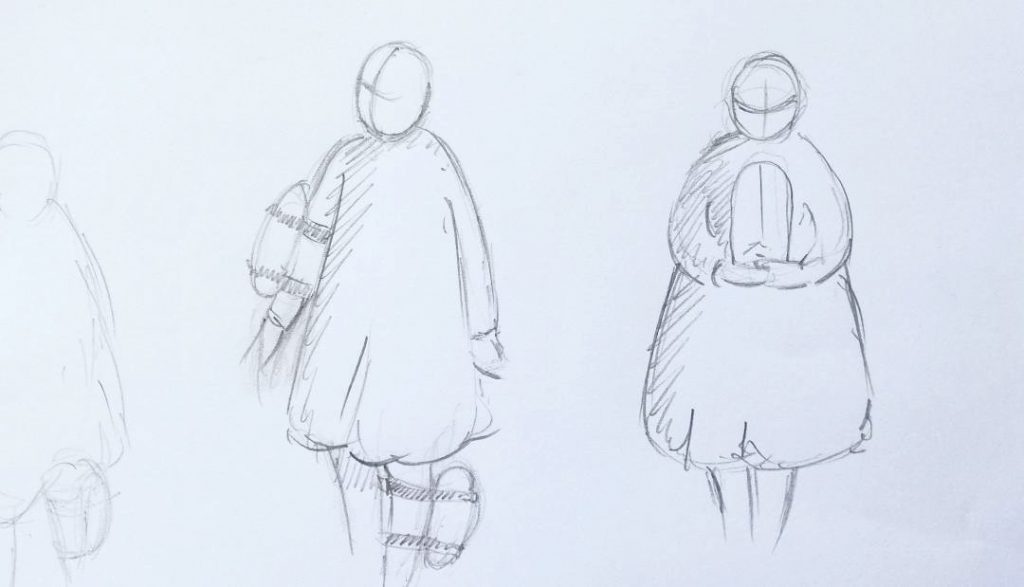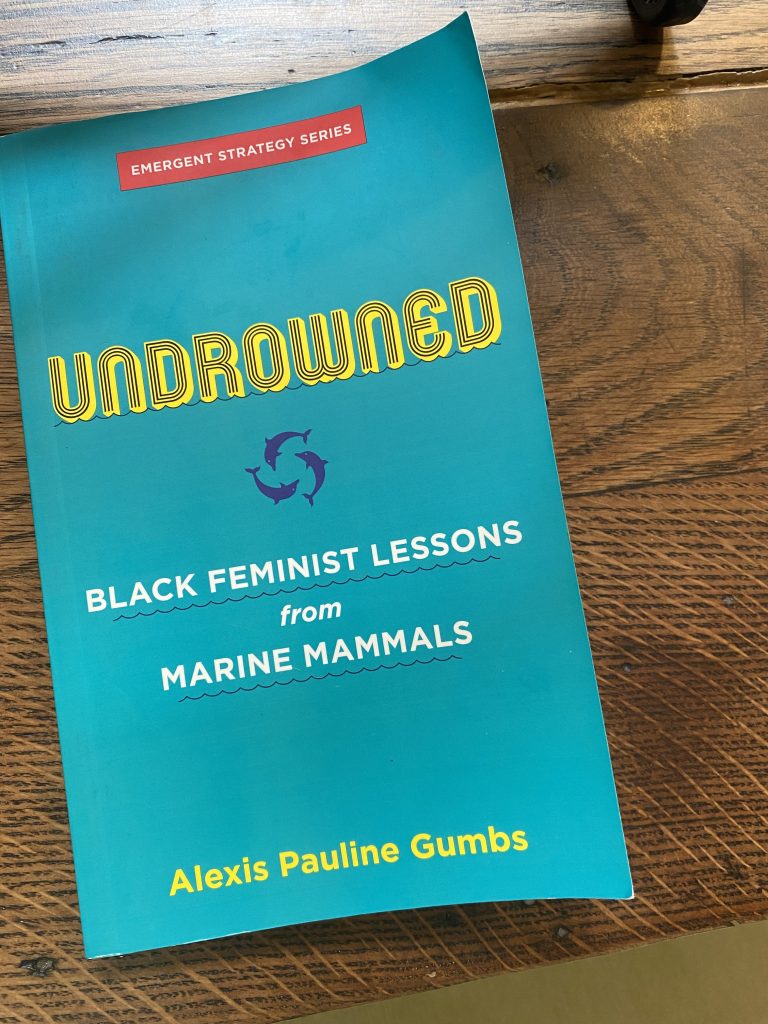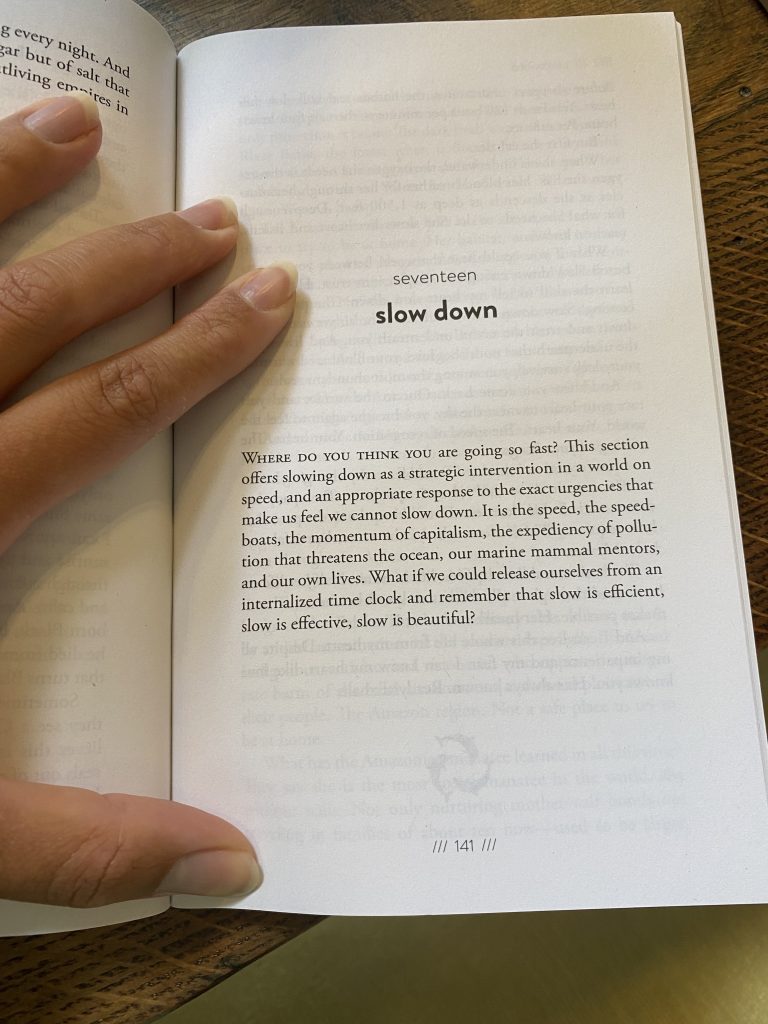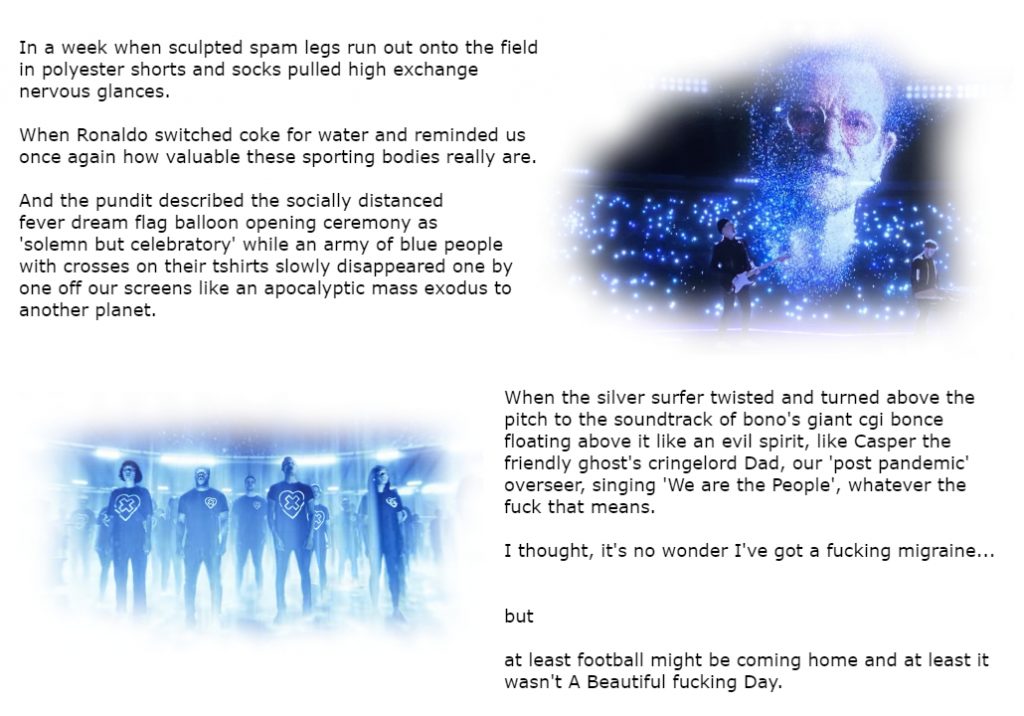A walk
I attended a really interesting Art & Tech workshop on Interactive fiction last night given by Dan Hett, hosted by BOM.
I’m really pleased to see that Interactive fiction is having a bit of a renaissance at the moment, not that it ever went away, but when everyone got seriously into VR the humble hypertext driven interactive narrative got a bit pushed to one side.
I really like the simplicity of interactive, hypertext fiction. It’s an invitation to the writer to get creative with storytelling, without too much tech getting in the way. I think one of the failings of VR is that the ‘magic’ of it, the glamour of such clever tech, can sometimes cover up poor game play with all VR’s bells and whistles.
Twine ticks a lot of happy boxes for me, it’s pretty simple to use, (I can use it!) but is flexible enough that if your coding skill-set is pretty good, you can do some fun things with it. It’s Open Source, which I love and it is free, which is also a huge plus point. Also you can use it right in your browser and files are saved as HTML so it’s really easy for anyone to download and play your creation.
I used twine to create Gurus of the Apocalypse last year, my first attempt at interactive fiction. In the end I couldn’t figure out how to get the Blogger site I was using to accept the HTML code for the story, so I ended up doing hard links to each page which was a pain (Blogger is not the platform it once was, sadly, but that’s another story).
One thing that Dan pointed out yesterday was that Twine is created for ‘mapping.’ He meant that in terms of mapping the story mainly, as Twine has a graphic interface that makes it very easy to see how items link to each other. He also mentioned this mapping capability for things like organising Role Play events, and mapping tasks for projects. But my brain immediately went to the main definition of mapping = mapping!
Map-ing.
I’m exploring my relationship to paths here and I’m thinking about that all the time. I now have a vague idea swirling around in my head which links Twine to a map of a path…is this a way I can write a story? Is this a way I can develop this project? I’m fumbling here but there is definitely a connection happening inside my cerebral cortex. Twine and maps. Interesting…..






I have created a gallery of 6 coloured photographs, inspired by the Ladybird reading books I had as a child. The colours are very saturated.
Image 1 was taken in my local park and shows a short path under a group of birch trees growing on a bank next to the access road to the park. The image caption reads ‘This is a path.’
Image 2 is a photograph of a tarmack path leading up a short hill between a row of elder people’s bungalows and a grassy verge with trees. There is no road, it is a footpath and accessible only to pedestrians. The image caption reads ‘This is a path.’
Image 3 shows a very narrow path, probably made by people and dogs, winding through some long grass and under trees at the edge of a park. It shows where people want to walk, making a path where one did not exist before. The image caption reads ‘This is a path.’
Image 4 is similar to 3, it is a photograph of a path made by people walking across the grass, under trees, in my local park. The path, which is simply a line of earth where people have trod away the grass, is wider than the path in image 3. The image caption reads ‘This is a path.’
Image 5 is a photograph of a suburban pavement running between people’s homes and a road. There are a few trees between the pavement and the road. In the near distance the back of a van can be seen jutting out from a driveway, half blocking the pavement. The image caption reads ‘This is not a path.’
Image 6 is a photograph of the access road and pavement leading to a park. A bright yellow height barrier can be seen blocking access to tall vehicles. Two cars and two small vans can be seen in the photograph, they are all parked on the pavement on the far side of the barrier. The image caption reads ‘This is a pavement. It is blocked.’
I am contemplating my blog posts on this platform.
In order to REFLECT I feel I need some SLOWING DOWN, RESTING, PAUSING time…to ALLOW my mind, heart, body etc. to RELAX, LET GO + BE.
And to do that I need to grant myself PERMISSION…
I think a lot about how resting, reflecting and repose are all about permission.
I feel conflicted about work and rest. Like the two oppose each other and lead to a sense of dissatisfaction.
Yet, the pace with which I have been enculturated, I’d say from the age of five or so, is so fast. It’s a constant busy-ness for the sake of busy-ness type feeling. And it has shaped the way I conceive of most, if not all things, including my own sense of intrinsic value.
The issue I am already confronting (for the sake of this residency) is:
I am choosing to free write – and record it as it’s happening. I guess I want to remove my tendencies towards PERFECTIONISM which I think is linked to this sense I have of NEEDING PERMISSION to REST.
So recording myself write this, removes the self-censoring, self-editing, self-criticism and allows for an acceptance of what is.


I did some rough sketches this morning to help me figure out how I might carry a drawing device. In the past, I’ve carried the devices hidden in a rucksack, or held in front of me and I also put devices inside paper shopping bags that other people could carry.
I think how you carry something affects your relationship with/to the thing. I usually have a rucksack on my back, so carrying a drawing device that way feels commonplace. Carrying anything in my rucksack is an ordinary everyday thing.
Holding the device in my hands changes how I think of it. Firstly the device is visible to others so the drawing it is making is a public drawing. Inside the rucksack it is a secret thing. Holding the device with two hands alters my balance as I am walking, alters my gait. The drawing is the drawing of my walk and a drawing of how I am holding the device.
What if I attached the device to my arm, or my leg? How would that feel? Would it alter the way the drawing looks from say, putting it in a rucksack?
Carrying the device like a handbag or shopping bag seems somehow neglectful, again a sort of commonplace, everyday thing.
Carrying the device cradled in my arms feels very different. Again, it would alter my gait, but it would also feel, I think, reverent.
Wearing the devices strapped to my body might make me feel very embarressed unless I disguised it in some way. I nearly always wear a dress when I am walking, so I could possibly hide it it I wanted to. Do I want to?
Dictionary definitions for ‘path:’
1. a way or track laid down for walking or made by continual treading.
2. the course or direction in which a person or thing is moving.
3. a course of action or way of achieving a specified result.
For this residency I am particularly interested in the first definition, though I have a feeling that the other two definitions are going to be relevant too.
My personal definition (and there are no doubt many holes in my reasoning) is that a path is a line through a landscape along which a person or group of people can travel, generally on foot or in wheelchairs.
Once a vehicle is used, a cycle or car for instance, I think a path becomes a road. However, a track can be a path and it may be used by vehicles or pedestrians.
Then there are ‘ways’ which can also be tracks and may fall into the definition of a road. Ways are generally ancient and are used by foot traffic as well as horse drawn vehicles, for instance bridleways.. (I really like the term ‘way’ to describe a path. Both path and way have multiple meanings, and those meanings include the spiritual and esoteric).
Here I must acknowledge that how I think and write about paths, tracks and ways is totally defined by my ethnic and cultural heritage and the country in which I have lived for most of my life. I’m white British, a mix of Irish, English and a smattering of Scottish and Scandinavian. I grew up in the countryside and do not feel comfortable in urban environments, though I do currently live in a suburb of Birmingham.
My relationship to paths and ways comes from walking or living in the Cotswolds, Wales, the Midlands, Yorkshire and the West and East coast of Britain. I’m not a wild path walker, I’m a traveller of farmland and gentle hills. I’m a hobbit in all the ways that matter.
I vehemently dislike the suburbs, despite my current living situation. I get no joy walking the endless pavements around my home patch. For me, for some reason I’m struggling to define, a pavement is not a path. I mean technically, it is, but it doesn’t feel like a path. Why is that?
There is something about the feeling of containment that a path has, that a pavement doesn’t have. A pavement is an edge, a border. A pavement is a designated space alongside a road built for motor vehicles. It is conceded to pedestrians and can be taken from them at any moment, despite laws meant to protect us. Pavements might be cut by access routes and driveways, blocked by delivery vehicles and cars, used by speedy cyclists as well as those on foot or in chairs. Pavements are contested, disrespected spaces, sometimes aggressively so.
Thinking about pavements and how problematical using them can be, I realise that the paths I walk in the city or suburb are imaginary paths. I regularly follow certain routes around my home, to the shops, to a favourite park, to the bus stop or train station. These routes can be along pavements, down alleyways, across parkland, over roads. There is no physical path on the ground that I am following when I walk these routes, but there is a path inside my head. It’s more like the route marked out on a paper map where it is the pencil line that becomes the path, that makes a path across the symbolic space, where a physical path may not exist.
In conclusion and for the purposes of the work I am exploring during this residency, my definitions of a path are:
1. a path is for people, not motor vehicles.
2. a path is a line through a landscape and this line can be a physical or a conceptual path created by following a route on the ground.
3. path is not a pavement, but a conceptual path may include the use of a pavement
To get me started in this residency space I am slowly, deeply and intentionally breathing into Alexis Pauline Gumbs’ book ‘Undrowned: Black Feminist Lessons from Marine Mammals’

I have a lot to process and it feels important to:

Extract from ‘Undrowned: Black Feminist Lessons from Marine Mammals’ by Alexis Pauline Gumbs’, Chapter: ‘Slow Down’
It’s not a straight path,
tarmacked and hot under sun,
it’s a dirt path,
meandering
under the oaks.
The path is
freckled with shadows,
as I am freckled.
It’s a redhead’s path,
one for
forest beings,
those who
value
concealment.
It’s a path for
being quiet on.
For walking,
softly,
with silent
footsteps.
Neatly,
along the brown, bare earth.
It’s strange to be a visitor in a city you used to call home.
There are places; shops, cafes, buildings, whole streets that I once felt affection for, my university, my favourite cafe, the library and bookshop where I worked, all places that made this city feel like home for a while.
Walking through here today has been very odd. It’s not home any more and the old affections seem to have morphed into something closer to… curiosity? It’s hard to identify the emotion, but I feel an unexpected emotional distance from places that once evoked strong feelings.
The paths however are a different story. This city is a very busy tourist destination, and as a local I walked through it on the hunt, seeking out the quietest streets, dodging through the crowds, avoiding the tourist traps.
I, a being who is almost pathological in my desire to avoid humans, mentally mapped a whole network of quiet paths, roads, streets, snickleways and alleys to get myself through the city by the least busy, least crowded routes. I rarely took the shortest way to my destination, if a longer route was human free, or relatively so.
I can’t recall those routes just by thinking of them, I have a terrible mental memory, but coming here and re-walking them, some 13 years later, I discover that my body memory is superb. My body knows where to go, which turn to take. Even as my mind struggles to recall what is down that alley, around that corner. My body knows.
Weirdly, I feel as if the paths know me too. Buildings, attractions, shops, those things are mere curiosities now, and they care nothing for me, but the routes, the paths I walk again here, they feel welcoming, embracing.
‘Walk there, cross this road here, come down this alley, yes take that corner,’ I feel welcomed back to the old paths, welcomed into this place, this landscape…

For the fifth Vital Capacities‘ residency, we partner with Institute for Creative Arts (Cape Town) and Wysing Art Centre (Cambridge) to work with artists from both South Africa and the UK. From 2 August, artists Siphenati Mayekiso, Nadine Mckenzie, Rebekah Ubuntu and …kruse will join Vital Capacities, to undertake research and develop new work. Working with our partners, they will explore and exchange new ideas using their studio spaces, and create new commission works throughout the residency.
The artists for August 2021’s residency are:
Continue reading “UK & South African artists join Vital Capacities for August”

Vital Capacities resident artist, Seo Hye Lee, was interviewed by lutte collective as their featured artist for August. Lee talks about her work as a deaf artist working with sound, and her time during the residency on Vital Capacities.
Read the interview here: https://luttecollective.com/
[Sound of Subtitles] by Seo Hye Lee (2021), commissioned with University of Salford Art Collection as part of Seo Hye Lee’s residency, can now be seen in the exhibition by clicking here.
Thinking about the ways that we formed ideas about our bodies and who had influence, especially in relation to our identities, is always a headfuck. Doing this project has been a reminder of this so I wanted to try to include an action that felt more nourishing, gentle and caring than my other research.
I asked a new friend, Melissandre Varin, who I had met through an online performance workshop, if they would have a conversation with me about these body topics. I had attended Mel’s artist talk and I find the way that Mel speaks about bodies and their own personal experiences to be very candidly honest and at the same time generous and kind.


Our latest exhibition by May 21 resident artists, Vishal Kumaraswamy, Tzu-Huan Lin and Katarzyna Perlak. See the exhibition now by clicking here.

I have really enjoyed occupying this digital studio space and having a dedicated period of time working on a single project. The support from vital Capacities and Film London has been amazing and I am excited to develop all of my research and tests into something to present as part of the exhibition later this month.
I am battling my own internal ableist voices which are telling me that I could have done MORE, posted more, worked more.. I have been resisting the urge to be professionally hyperable.. (yuck). And in many ways I have failed because I am exhausted.
So now it’s breaktime! If anyone needs me I’ll be in a static caravan on the Yorkshire coast for the week and you can speak to my out-of-office autoresponse until then.

In this post, I’m going to explain why I am using visual of the ceramic throwing process and hands crafting. In the picture above, the definition of throwing is described as “A mass of clay soon becomes an object of beauty in the hands of a skilled craftsman”- this description resonates with my intention of turning the subtitle into something of beauty, and something that should always be included from an accessibility point of view. On a side note: the word “craftsman” should be changed to craftsperson or maker (unfortunately, some old film archives can reveal archaic gender stereotypes).
Craft videos are fascinating as they frequently show pairs of hands making objects from a shapeless form into something beautiful. For me, this formation presents a parallel between the idea of digitally shaping words into the language of subtitles, exploring its poetic nature. I’d like to thank Will McTaggart from North West Film Archive for the recommendation of the beautiful craft films by Sam Hanna—to view these, this website has a compilation of Hanna’s craft films- the link is here.
As we are reaching the end of June residency, I would like to focus on making a visual connection between videos of hands throwing, crafting, intertitles, and open captions using re-written subtitle language.




A long-term enthusiasm of mine is mascot costumes. I have a collection of images on my laptop and phone of my favourites. I especially like Tweety for reasons I will explain in a later post.


For June 2021’s Vital Capacities’ residency, we are collaborating with Film London Artists’ Moving Image Network (FLAMIN), Phoenix and University of Salford Art Collection. Working with three artists from across the UK, Seo Hye Lee, Laura Lulika and Linda Stupart.
Across June, artists will be researching and developing new work, with work commissioned in collaboration with our partners. Artists will be experimenting with ideas, developing new projects, and sharing work with audiences. The artists are:
Continue reading “Artists from across UK join Vital Capacities as artists-in-residence for June 21”